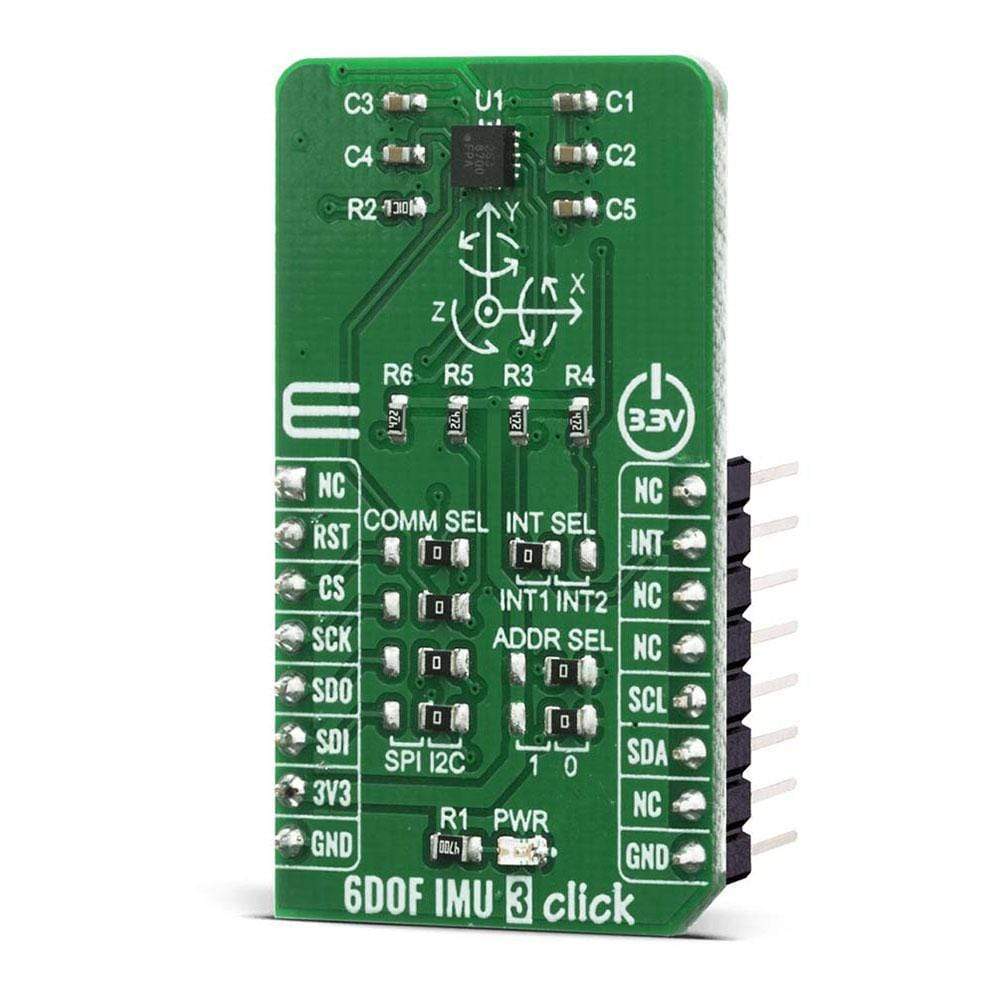
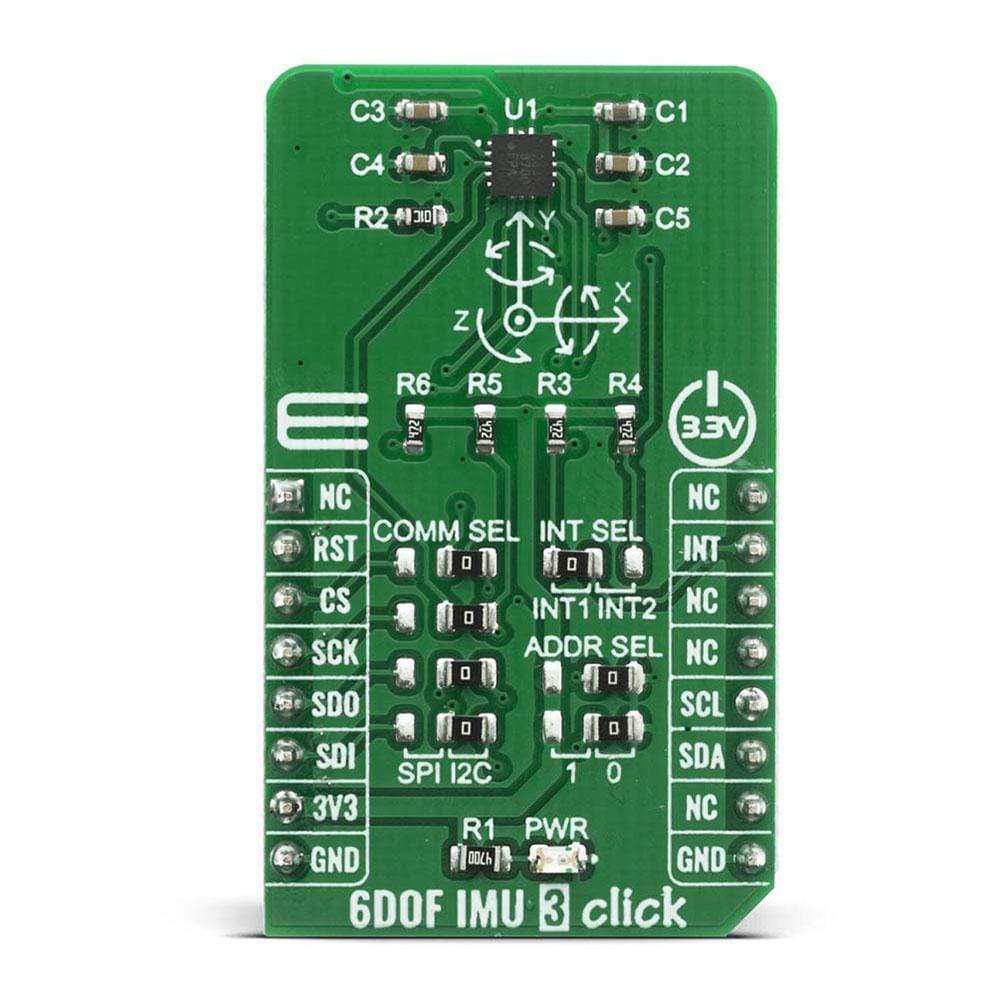
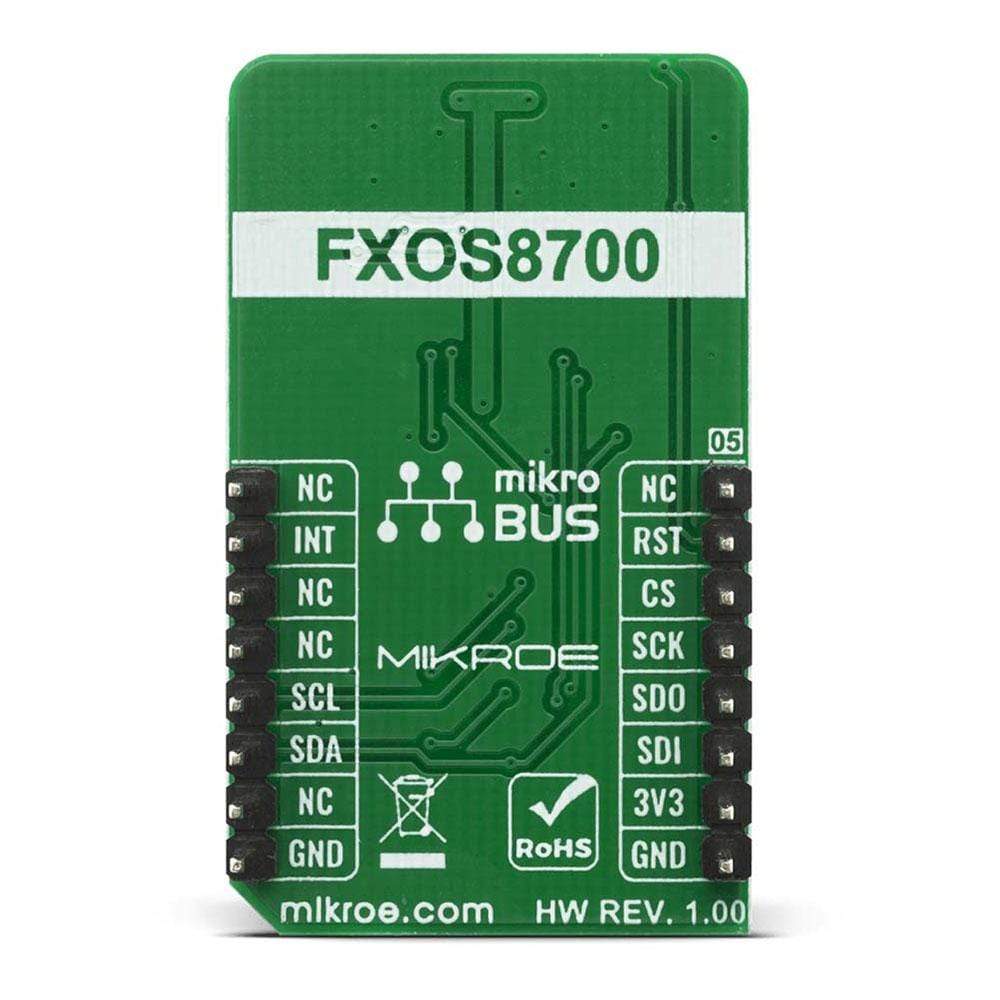
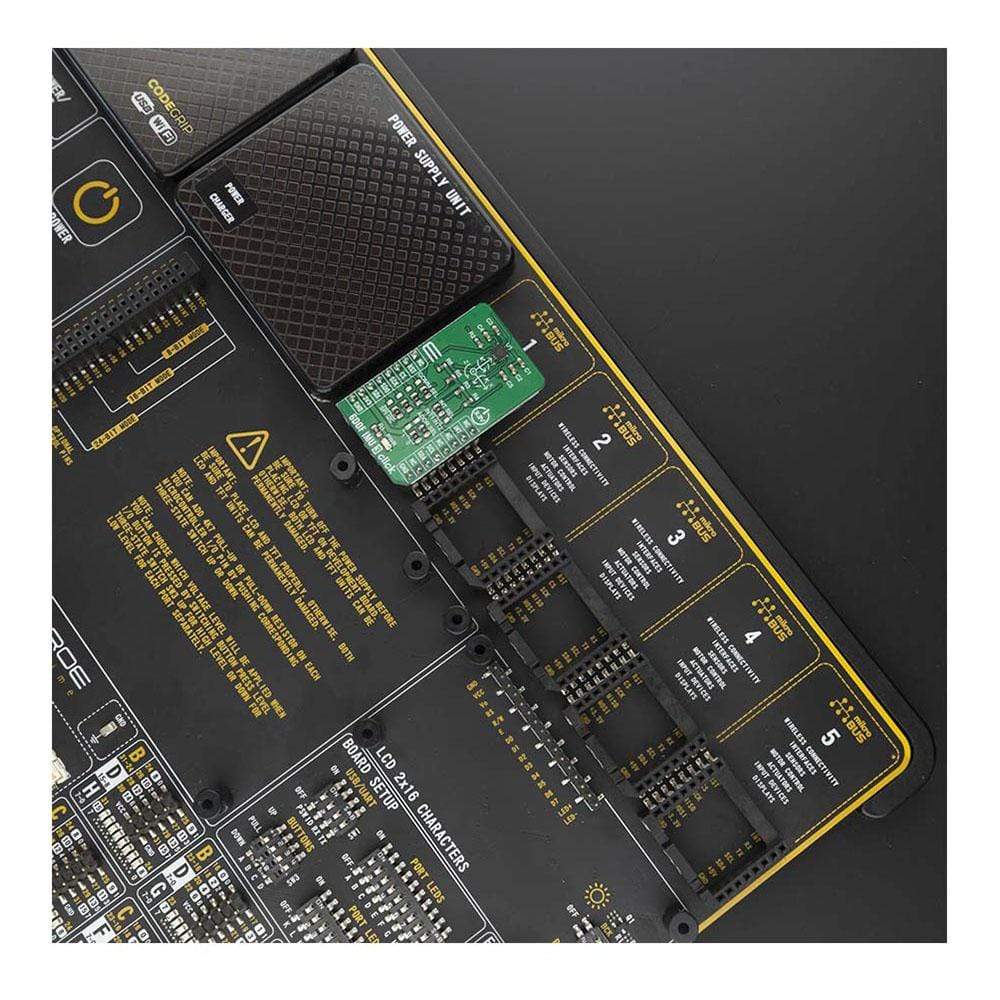
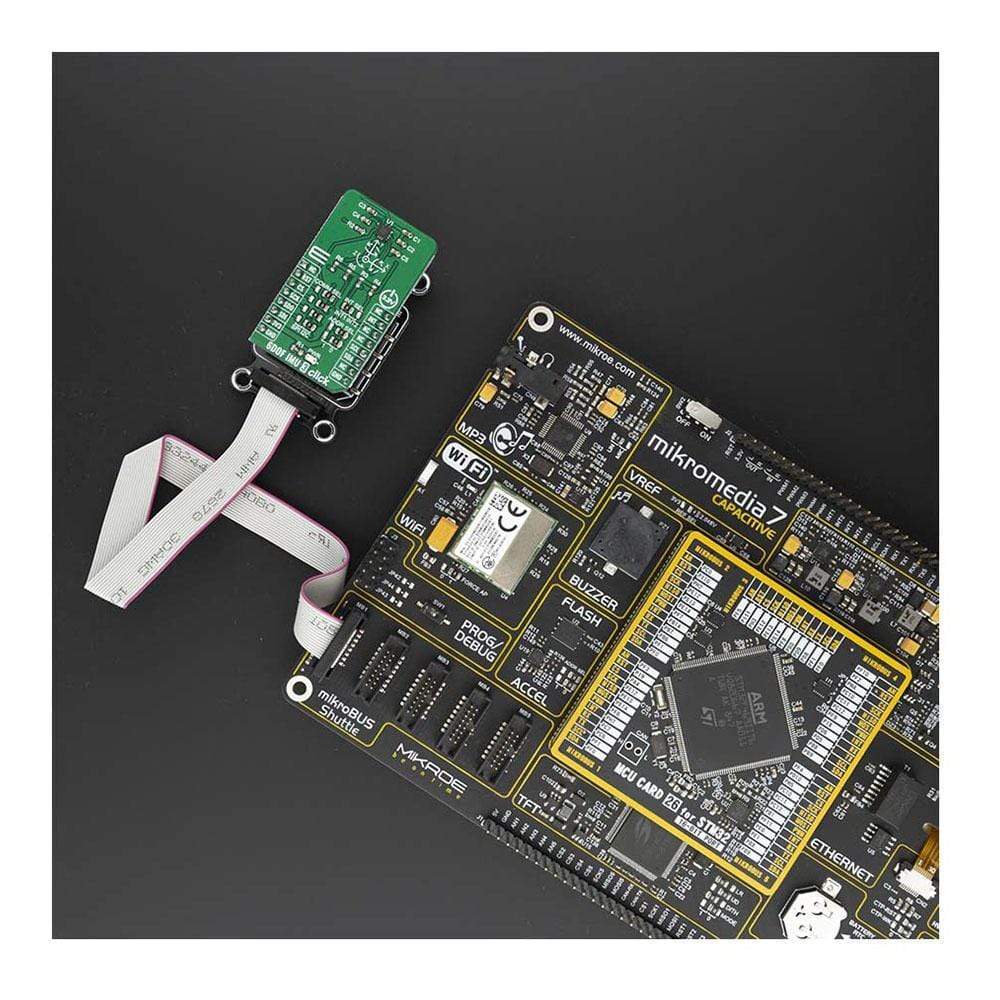
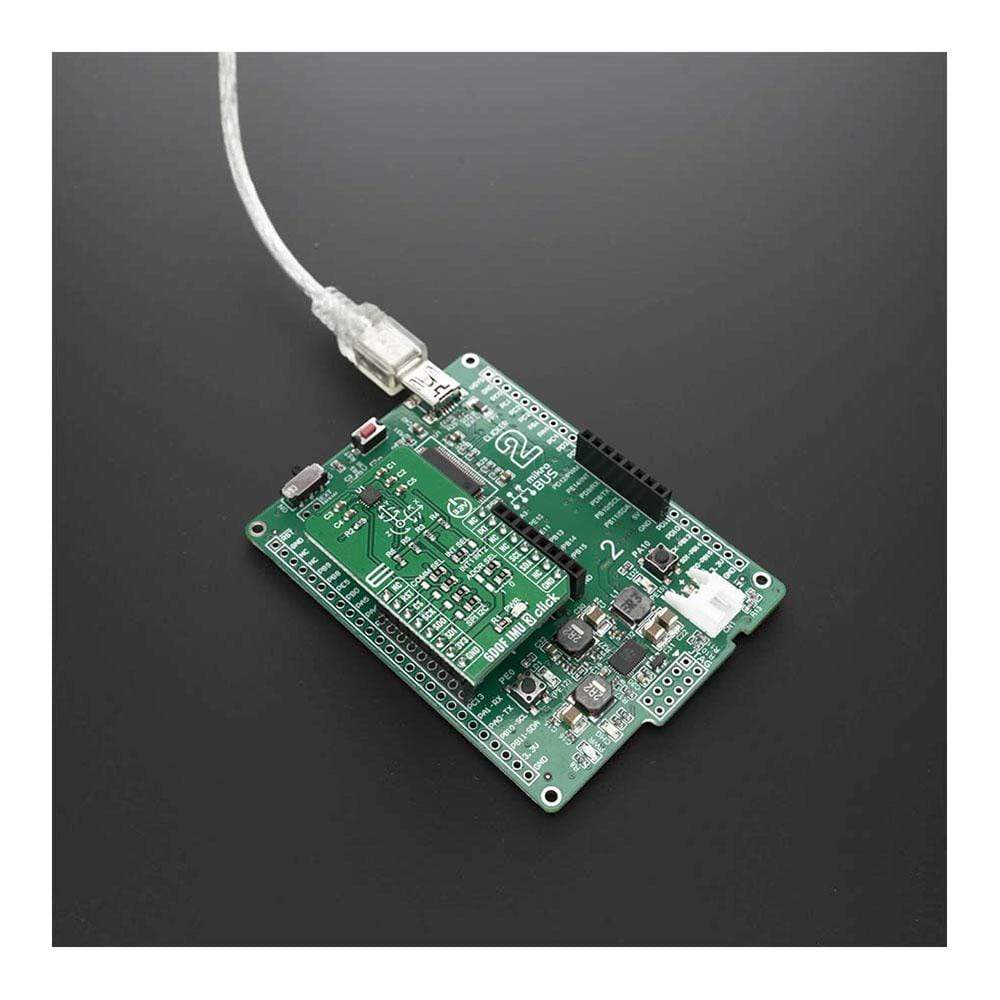
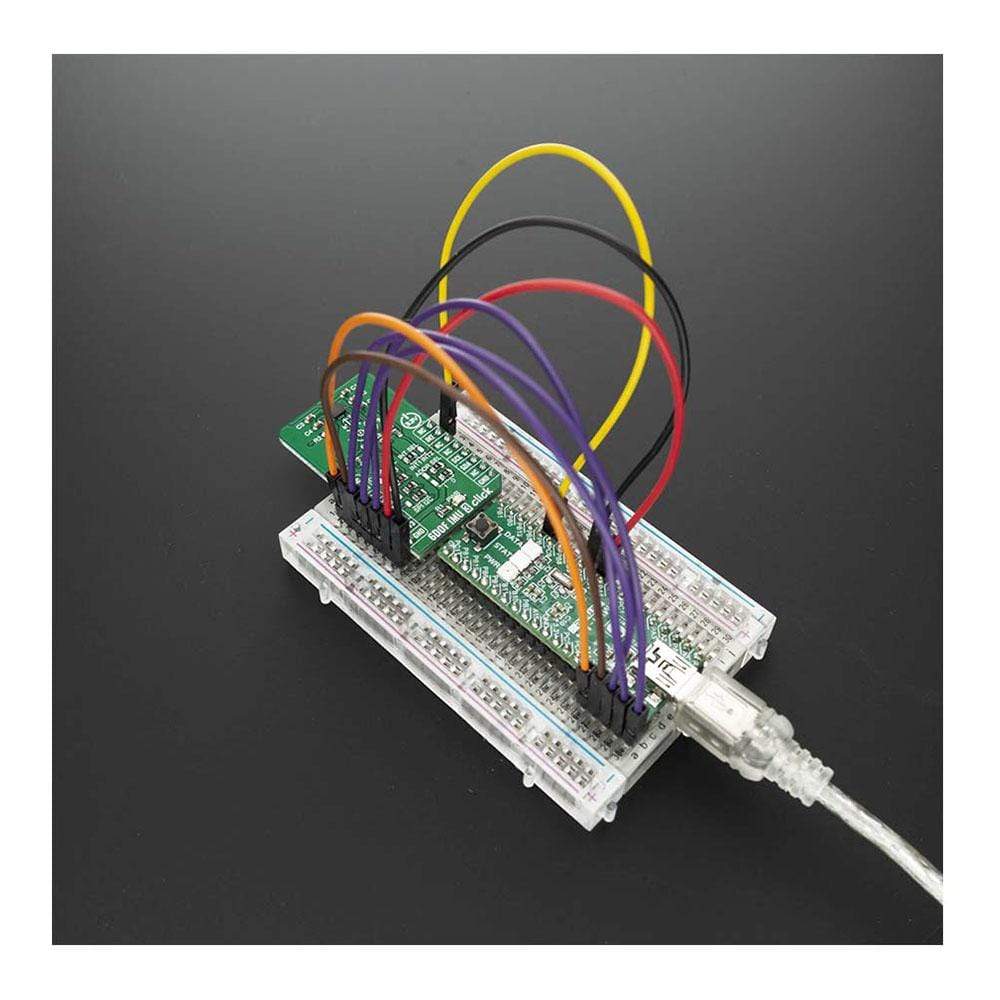
Key Features
Overview
The 6DOF IMU 3 Click Board™ is a complete 6-axis detection development board suitable for movement and position tracking devices. This Click Board™ board features the compact FXOS8700CQ motion sensor from NXP, an integrated 3-axis linear accelerometer and a 3-axis magnetometer combined in one package.
The device supports a selectable I2C or point-to-point SPI serial interface with a 14-bit accelerometer and 16-bit magnetometer which are combined with a high-performance ASIC to enable an eCompass solution capable of a typical orientation resolution of 0.1° and sub-5° compass heading accuracy for many applications.
Downloads
Das 6DOF IMU 3 Click Board™ ist eine vollständige 6-Achsen-Erkennungs-Entwicklungsplatine, die für Bewegungs- und Positionsverfolgungsgeräte geeignet ist. Diese Click Board™-Platine verfügt über den kompakten Bewegungssensor FXOS8700CQ von NXP, einen integrierten 3-Achsen-Linearbeschleunigungsmesser und einen 3-Achsen-Magnetometer in einem Gehäuse.
Das Gerät unterstützt eine wählbare I2C- oder Punkt-zu-Punkt-SPI-Seriellschnittstelle mit einem 14-Bit-Beschleunigungsmesser und einem 16-Bit-Magnetometer, die mit einem Hochleistungs-ASIC kombiniert werden, um eine eCompass-Lösung zu ermöglichen, die für viele Anwendungen eine typische Orientierungsauflösung von 0,1° und eine Kompassrichtungsgenauigkeit von unter 5° bietet.
| General Information | |
|---|---|
Part Number (SKU) |
MIKROE-4086
|
Manufacturer |
|
| Physical and Mechanical | |
Weight |
0.017 kg
|
| Other | |
Country of Origin |
|
HS Code Customs Tariff code
|
|
EAN |
8606018717286
|
Warranty |
|
Frequently Asked Questions
Have a Question?
Be the first to ask a question about this.







